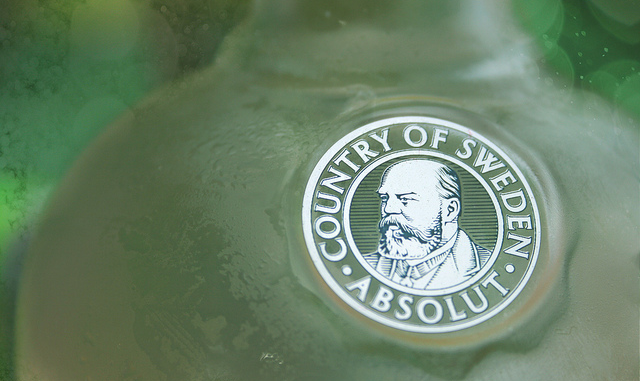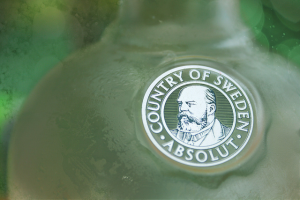
[apologies for my absence last week: I was felled by work and illness. The following is based on a request from a reader:]
Providing measurements in absolute units has several benefits. Amongst others, it allows you to determine the volume fraction of scatterers, and it lets you compare measurements better (thus helping to shield you from procedural mistakes). Furthermore, you score extra brownie points with reviewers of your papers, as it shows that some care has been taken in the collection. This has been very easy to do for solid samples, thanks to Jan Ilavsky’s glassy carbon samples. Now, though, we have liquid samples, so how do we do this in practice?
Prerequisites:

Image: CC-licensed by Marina Aguiar https://flic.kr/p/aXRCPX
First off, what I would very strongly recommend for liquid samples is a flow-through capillary, or at the least a re-usable capillary. The standard (borosilicate, lindemann glass, etc.) Mark-tubes should not be used for this. While they are present in almost every lab as liquid sample containers, the variance between tubes is — in my experience — too large to be able to do a decent background subtraction. Only a few have succeeded in this, with many more leaving the field amidst blood-covered shards of these damn tubes. Furthermore, the inner diameter is not so homogeneous, so an accurate measure of the quantity of material in the beam is also lacking.
We, fortunately, have in our lab a flow-through cell made from some magic plastic tubing that enters and exits our vacuum chamber. The plastic has a low enough scattering signal to not interfere with our measurements. Anton Paar sells this tube, though anyone with a Raman, IR or NMR instrument is also welcome to take a section and figure out what it is made of (as long as you report it here :)). However, any decent re-usable capillary or glass flow-through cell will do.
The procedure
Our current procedure to measure liquids in absolute units has three steps:
First, We determine the transmission factors of everything we need: our capillary filled with air (or vacuum), a capillary filled with water, a capillary with our background solution and a capillary with our sample solution. Determining the transmission factor accurately, though, isn’t quite as easy as we thought (1, 2, 3, 4). The uncertainties in this determination are directly responsible for the uncertainty of your absolute scale.
Second, We measure accurately the scattering pattern of our empty (or air-filled) capillary, followed by an accurate measurement of water. In a slit-focused system, 20 minutes for each is sufficient (since desmearing is not necessary for what we intend to do with this data). However, for pinhole-collimated systems, you may need a bit longer to get good data, perhaps a few hours or an overnight measurement.
Both datasets are then corrected for the basics. That means DS, DC, MK, TI, FL, TR, SP, and in that order (click for clarification on the abbreviations), where DC is the darkcurrent correction. The difference of these two datasets will give you the scattering pattern of water. Water is supposed to have a largely flat scattering profile (see my previous post on this), if it doesn’t, chances are you did something wrong in the data correction.
At room temperature, this flat scattering level of water is supposed to lie at 1.62 . That scaling difference between your measured water level in your arbitrary units and 1.62
is exactly what you need. By scaling your future data with this value (the calibration factor), you can shift things to absolute units! Easy, right?
So the third step is to measure your samples and sample background solutions. As long as you don’t change too much on your instrument (don’t realign the optics, change the capillary or let the dogs loose in the lab), the calibration factor shouldn’t change. So you measure your sample background solution, your sample itself, process both with DS, DC, MK, TI, FL, TR, SP, subtract and multiply the resulting sample scattering pattern with your calibration factor. Done: absolute units.
In other words
So to reiterate, using one capillary, you:
- Measure what the transmission factors are of the empty capillary, the capillary with water, with your sample background solution and with your sample. If your instrument supports this, you may do this during the following measurements. Mind the pitfalls though (1, 2, 3, 4)!
- Measure the empty capillary, and that capillary filled with water.
- Apply the basic data corrections DS, DC, MK, TI, FL, TR, SP (you can leave out SP for small angles, and FL for stable instruments).
- Subtract from one another to obtain a flat water scattering profile.
- Determine the calibration factor you need to use to bring the water level up to 1.62
- Measure your sample background, and your sample
- Apply the basic data corrections (as point 3 above), and subtract the sample background from the sample measurement.
- Multiply the result with your calibration factor from point 5.
- Do a little victory dance: you rock! Doubly so if you propagated the uncertainties through all of this, in which case I also tip my hat to you.
What else?
There are optional additional steps to this. You can, if you want, include a flatfield (FF) and/or thickness (TH) correction after background subtraction. The thickness correction may help a bit later on to keep the calibration factor largely independent of your capillary choice. If you need to, you can do a de-smearing step at the very end.
All the corrections and abbreviations given here are detailed in my now ancient paper.

Hi Brian,
I am very surprised that you claim it is not possible to measure liquids in capillaries on absolute scale.
I have to disagree strongly. As long as you use a glass capillary as flow through cell, it is not a problem.
Maybe it would be worth to show here 10 measurements of 10 different plastic tubings to verify if your statement is correct.
You should also mention the other disadvantages plastic can have.
PS: I don’t like you abbreviations – too many, too confusing.
PS2: And if you don’t have a CCD?
M. Bernard needs to read this again… “However, any decent re-usable capillary or glass flow-through cell will do”
For the abbreviations, click on the link. There’s a legend!
Dear Martin,
It would be more polite to address me directly. Politeness is not harmful.
How clever is it to hide the abbreviations on the next page behind a link? What does a legend help if it is not on the map?
The author claims that he is fortunate to have a flow-through cell made from plastic working like a charm.
What works here like a charm, is the point that the author is using a flow-through cell and not one single compartment per sample.
That is a long known fact.
How to measure something on absolute scale is described in many papers.
Furthermore, I would like to see how different are the measurements when using 10 different plastic compartments.
And finally, nothing speaks against Mark-tubes, if you use them in the correct way, i.e. as flow-through cell.
Indeed, the procedure described here is nothing new. However, we were getting questions on how to measure liquids in absolute units, so obviously there was some space for a clear step-by-step description.
As for the abbreviations, I agree that it should have been clarified in the text where to find them (now clarified, although it did say at the bottom: “All the corrections and abbreviations given here are detailed in my now ancient paper.” with a link to that paper). In this case, however, the corrections are not the point of the post and have been discussed plenty of times in the past. Writing them all out in full would have generated an unwieldy paragraph distracting from the point.
A separation on what corrections are recommended for which detector is included in the big review paper of 2013. However, I do these corrections listed above not for a CCD detector, but for a Dectris Mythen strip detector. CCD detectors are horrid for SAXS and should be avoided (they don’t have the dynamic range required and suffer from a host of distortions). The darkcurrent correction for the Mythen detector contains in it the correction for natural background radiation levels, which is why we apply it here.
Now as for the last point, the article states “However, any decent re-usable capillary or glass flow-through cell will do.”. What doesn’t work is those Mark tubes you see in every lab for reasons described above. Now I do see there are double-ended Mark tubes (which I have not seen in any lab), and I know you can knock the end off a standard one and use it as flow-through capillary. But however you slice or dice those, the pathlength is unlikely to be accurately defined as these tubes do tend to taper.
As for comparisons of plastics, I do believe many have sunk their teeth into that exercise. As far as I can see, any low-scattering plastic will do, as long as you know the sample pathlength and can accurately determine transmission factors. We recalibrate for every piece of plastic tube we use.